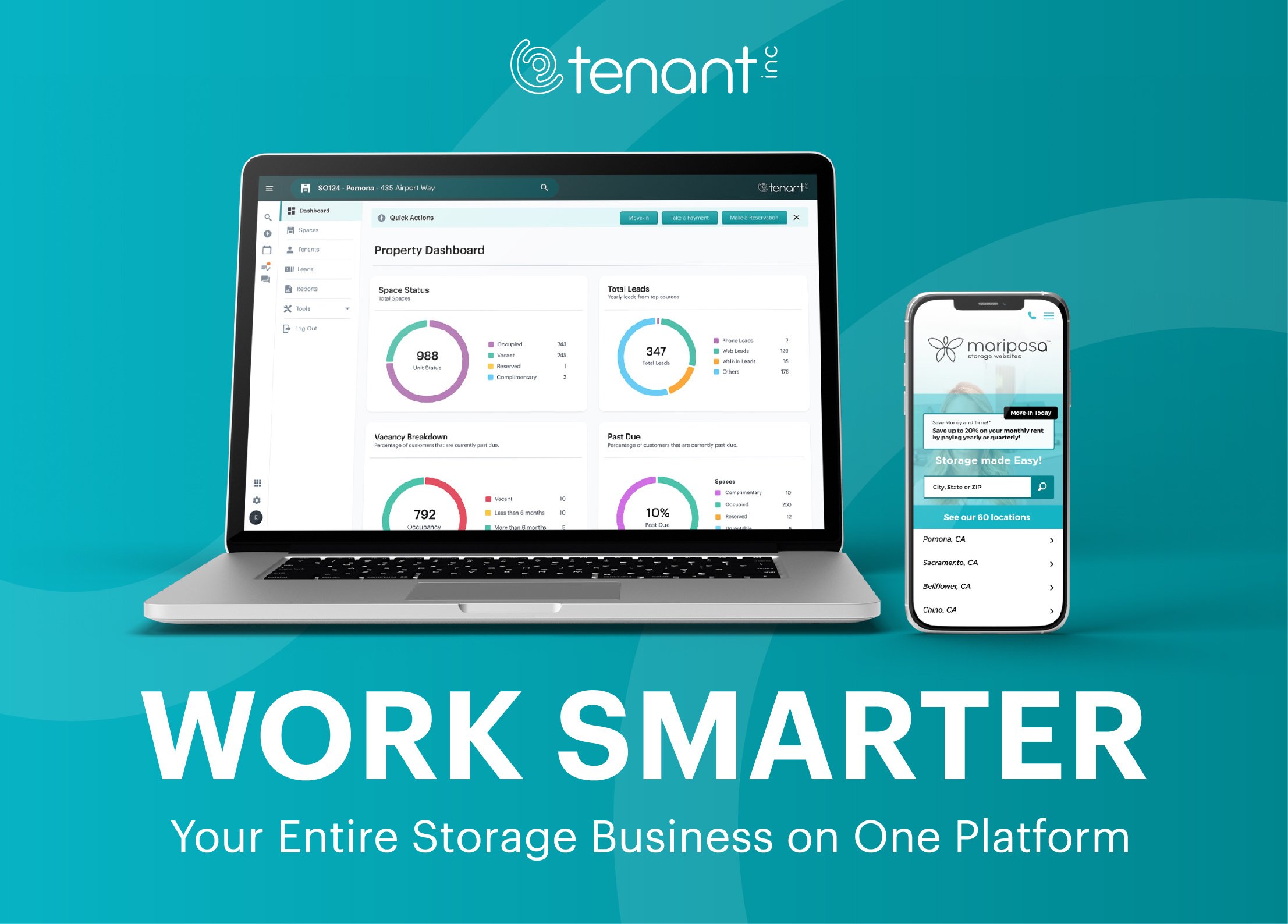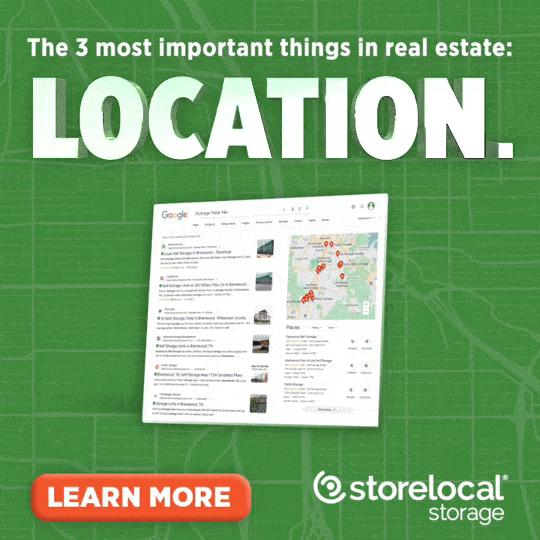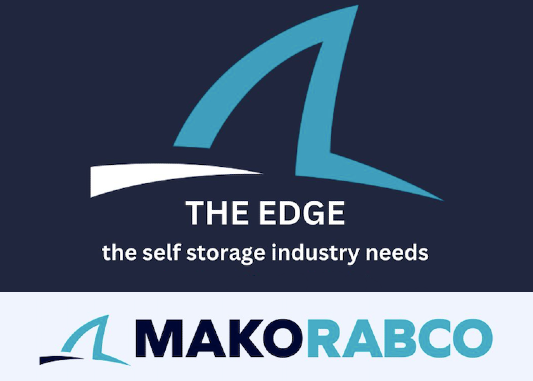Numbers Game: How Harnessing Data Helps You Succeed
In today’s digital age, data has become one of the most valuable assets for businesses, including those in the self-storage industry. Companies that harness the power of data can unlock significant competitive advantages, driving innovation, efficiency, and growth. However, merely collecting data is not enough. It’s crucial for businesses to own and control their data to fully capitalize on its potential.
The Importance Of Data Ownership In Self-Storage
Owning your data means having full access and control over the information that flows through your business. This ownership is critical for several reasons.
Lance Watkins, CEO of Tenant, Inc., said, “Once you master data ownership, your ability to mine value becomes endless. Small business owners for the first time, with the help of targeted industry specific software ‘vSaas,’ can unlock the questions most people have only daydreamed about! I have seen large and small storage operators react with sheer amazement once they see their data come to life. The moment they see their data visualized, they are instantly able to spot critical trends, areas of improvement, customer behavior, the ability to forecast, and much more. It’s a whole new world.”
Maybe the most important aspect is it creates questions you may have missed. For example, in the graph below, this portfolio can take one look at the chart and know they must make a decision as to whether to stay open and Sundays and take an investigative look as to why there are a sudden spike in move-outs on Tuesdays. Is their inventory only being updated on Tuesday?
1. Strategic Decision-Making
Data-driven decisions are more informed and accurate. By owning your data, you can analyze it to uncover insights that guide strategic planning and operational improvements. For self-storage businesses, this could mean optimizing unit pricing, managing occupancy rates, making informed decisions on staffing levels, improving customer service, and refining operations overall.
For example, the above chart depicting rental activity by day of the week reveals that Sunday has the least number of rental activities, while Tuesday has the most. This information helps you understand customer preferences for moving in or out, allowing you to plan your staffing levels more effectively. Tagline for this example could be, “Because Sundays are for brunch, not moving.”
2. Personalized Customer Experiences
Understanding your customers’ behaviors and preferences through data allows you to tailor your services to meet their specific needs. Operators can understand customer demographics, move-in/move-out trends, and storage needs, enabling targeted marketing campaigns, personalized service offerings, and the development of amenities catering to specific customer segments. This personalization fosters customer loyalty and drives repeat business.
For instance, you can offer tailored promotions or automated reminders for contract renewals. By analyzing data insights, you can better track tenant information, rental history, and communication preferences, leading to improved customer service and retention.
The chart above, for example, shows the percentage of leads coming from different platforms: 40.9 percent from iPhone, 25.64 percent from Windows, 17.15 percent from Android, and 16.24 percent from Mac. This graph helps you understand which platforms your customers use, enabling you to better target your marketing campaigns and enhance customer engagement. Tagline for this example could be “Target your ads where the clicks are—40.9 percent from iPhone and 100% awesome.”
3. Innovation and Competitive Edge
Data ownership enables self-storage businesses to innovate by identifying new market trends and opportunities. Companies can develop new services or improve existing ones based on real-time data insights, giving them a competitive edge in their industry while delivering a superior customer experience. Data insights can be used to assess the viability of new locations, identify potential development opportunities, and understand the competitive landscape.
The chart above groups properties by their age, indicating the time since the property went live. It reveals that properties that started within the last 12 months have progressed well, reaching towards an 85 percent ideal occupancy. In contrast, properties that started more than 24 or 36 months ago are trending downwards from 90 percent to 80 percent occupancy. This trend suggests that older properties may be receiving less attention. Understanding these patterns helps in focusing resources and strategies to sustain occupancy rates and maintain competitive advantage. Tagline for this example could be “Older properties: still kicking, but let’s keep them shining.”
4. Maximize Revenue
Data analysis can inform dynamic pricing strategies that adjust rates based on demand, create promotions and campaigns for targeting specific unit categories, competitor pricing, and seasonal fluctuations. Additionally, data can help identify upsell opportunities for services like packing supplies, moving assistance, or insurance.
The chart above shows the occupancy trend year to date, revealing a slight drop at the end of each month due to a higher number of move-outs. To counteract this, you can implement pricing techniques to boost move-ins during this period, helping to maintain stable occupancy levels and prevent revenue loss at the end of each month. Tagline for this example could be “Occupancy drops? Time to price it right and keep the cash flowing.”
5. Compliance and Security
With increasing regulations around data privacy, owning your data ensures you can implement robust security measures and comply with legal requirements. This not only protects your business from potential fines and breaches but also builds trust with your customers who expect their personal information to be handled with care.
The Power Of Business Intelligence In Self-Storage
Business intelligence (BI) tools transform raw data into actionable insights through advanced analytics and visualizations. The true power of BI lies in its ability to democratize data access across an organization, empowering employees at all levels to make informed decisions.
1. Improved Operational Efficiency
BI dashboards provide real-time visibility into key performance indicators (KPIs) specific to the self-storage industry, such as occupancy rates, revenue per unit, and customer acquisition costs. This helps businesses monitor operations and identify areas for improvement, leading to streamlined processes and enhanced productivity.
2. Enhanced Reporting and Analysis
BI tools simplify the reporting process, allowing for quick and accurate generation of reports. This ease of access to information enables better analysis and faster response times to market changes. Self-storage operators can quickly identify trends and make data-driven decisions to maximize their returns.
3. Predictive Analytics
Leveraging historical data, BI solutions can forecast future trends and outcomes. Predictive analytics helps self-storage businesses anticipate customer needs, optimize inventory (such as packing materials), and plan for future growth, ensuring they stay ahead of the competition. Website analytics can reveal user behavior and identify potential pain points in the online booking process.
Conclusion
In conclusion, owning your data and leveraging business intelligence tools are essential for any modern self-storage business aiming to thrive in a data-driven world. By taking control of your data, you can unlock its full potential, driving strategic decision-making, personalized customer experiences, and continuous innovation.
–
Gandhar Rane is the Product Manager–Reports & Business Intelligence for Tenant, Inc.
More Content
Popular Posts
Recent Posts
Senate Bill 709 (SB709) has many in the...
In January, self-storage industry veteran...
In April 1984, the first non-stop commercial...
Raise your hand if you’ve ever made plans,...
Everyone knows it: Investing in real estate...
They say when one door closes, another one...
Like its name implies, Surprise, Ariz., a...
Self-storage has become as reliant on the...












